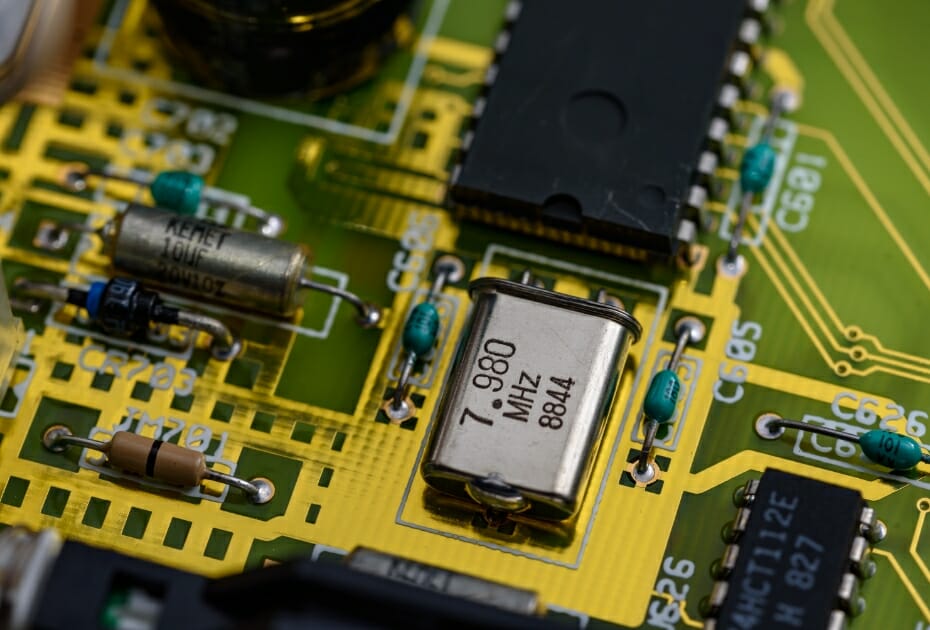

Your Crystal Oscillators and Quartz Oscillators Need to Be Integrated onto the Board Early
There’s a lot that goes into building a circuit board. You need to have the right components and timing solutions for your particular design, and the build of the circuit board needs to be completed using a certain set of best practices. One of those best practices is when to incorporate the timing solution. Your timing solution will be a crystal oscillator, quartz oscillator, or similar product.
The hard and fast rule on timing solutions is you should never incorporate them last. Before we delve deeper into that, let’s review some other crystal and oscillator printed circuit board design best practices. The following tips will help you get the most out of your circuit board design and help prevent common errors.
Circuit Board Considerations and Best Practices
The following best practices follow the industry standard rules so that problems such as electromagnetic interference can be kept to a minimum. Ideally, you want to avoid needing to use complicated formulas or expensive simulation tools. By using best practices, you can increase integration and reduce your overall board size.
Typically, the first step to building out a circuit board is outlining the product or application via diagram. Once this portion is done, you can then start to look at components and chip sets that will be a good fit. For example, most functional circuit boards will use an ASIC or a microprocessor to perform a specific function such as Bluetooth, video, or sound.
However, the chip must be supported by the appropriate surrounding components (power, timing, memory, input/output, antenna, etc.) to work. The most important part is ensuring the timing solution is running at optimal levels. The timing solution is just as important as the chip portion.
The best practices that can be applied to crystal printed circuit board (PCB) designs and oscillator printed circuit board (PCB) designs include:
- Avoid right angle bends in traces
- The length of traces in the oscillation circuit should be as short as possible and must not cross other signal lines
- Do not lay out the ground (GND) pattern under the crystal unit
- Do not run digital/RF signal lines or power under crystal unit for multi-layered PCB
However, there are some notable differences when comparing crystal to oscillator printed circuit boards. Refer to our Crystal And Oscillator Printed Circuit Board Design Considerations post for more details, layout examples, and other critical information.
Determining the Right Timing Solution for Your Circuit Board
If you are building every aspect of your circuit board, then you will need to consider all the operational requirements of the circuit. Even when following best practices and everything you learned in engineering school, sometimes the anomalies and unknowns can throw a proverbial wrench in your design plans.
In the experience of our engineers at ECS Inc., we’ve found that it’s best to over-spec or pad your clock’s performance to overcome any potential issues. Remember, you can always refine your design after you’ve established proof of concept.
There’s not one perfect fit as far as timing solutions go. Depending on your budget – because cost is a driving factor – you should try to work with a frequency control company that best fits your design needs with respect to what you can spend. It’s possible that your frequency company may offer you a better part from their standard stock of online electrical components. This would allow you to take advantage of better distribution inventories and/or economy of scale because the part would be more readily available.
Consequences of Choosing Your Timing Solution Last
Because frequency is technically a passive component, many engineers and industry professionals are more concerned about the silicon ASIC and microprocessors instead of the timing solution.
There are numerous consequences that can happen if you decide to implement your timing solution last. The most common one is that engineers who have saved the timing solution for last end up with not a lot of board to work with and have few or no options to get power to it. Additionally, both crystals and oscillators should be as close to the chip as possible for optimal performance (minimizing noise and signal degradation).
The result could lead to an entire reconfiguration. That means lost parts, lost labor, and an entire redesign of the board to appropriately accommodate this vital passive component. Let that be a lesson to always consider your timing solution early in the process.
ECS Inc. Offers Electronic Components Online
If you are in search of high-quality components that deliver precise timing, reliability, and stable performance, ECS Inc. carries the following timing solutions.
Some of the most popular solutions our customers use include 32.768 kHz crystal tuning forks, AEC-Q200 crystals, surface mount oscillators, programmable oscillators, and real time clocks (RTC).
Our parametric search allows you to locate specific components by stability, size, temperature range, resonance frequency, tolerance, mounting type, and other attributes.
Our search tool makes it easy to find an ECS Inc. sales representative in your area. As a global supplier of advanced passive components and timing solutions, ECS, Inc. International has a vast network of authorized distributors.
Don’t Choose Your Timing Solution Last! Here’s Why was last modified: February 14th, 2023 by